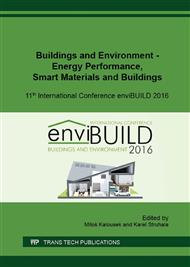p.547
p.556
p.564
p.577
p.585
p.593
p.601
p.609
p.618
Environmental Assessment of Buildings Constructed by Modern Methods of Construction
Abstract:
Currently, we are witnessing the significant impact of industrial activity on the environment. A recent study shows that construction is the third largest industry sector in terms of environmental pollution. One option to reduce these negative effects is environmental assessment of buildings, as well as the used building materials. One of the most comprehensive environmental assessment methods is LCA (Life Cycle Assessment), which includes the assessment of impacts within mode ”Cradle-to-gate” which is focused on assessment of a partial product life cycle from resource extraction (cradle) to the factory gate (i.e., before it is transported to the consumer). The aim of this paper is a comparison of the environmental impact of selected material variants applied within modern methods of construction. The comparison will be processed through the results of the case study containing three material variants of family houses construction in term of three selected parameters - embodied energy, global warming potential and acidification potential.
Info:
Periodical:
Pages:
601-608
Citation:
Online since:
December 2016
Authors:
Price:
Сopyright:
© 2017 Trans Tech Publications Ltd. All Rights Reserved
Share:
Citation:


